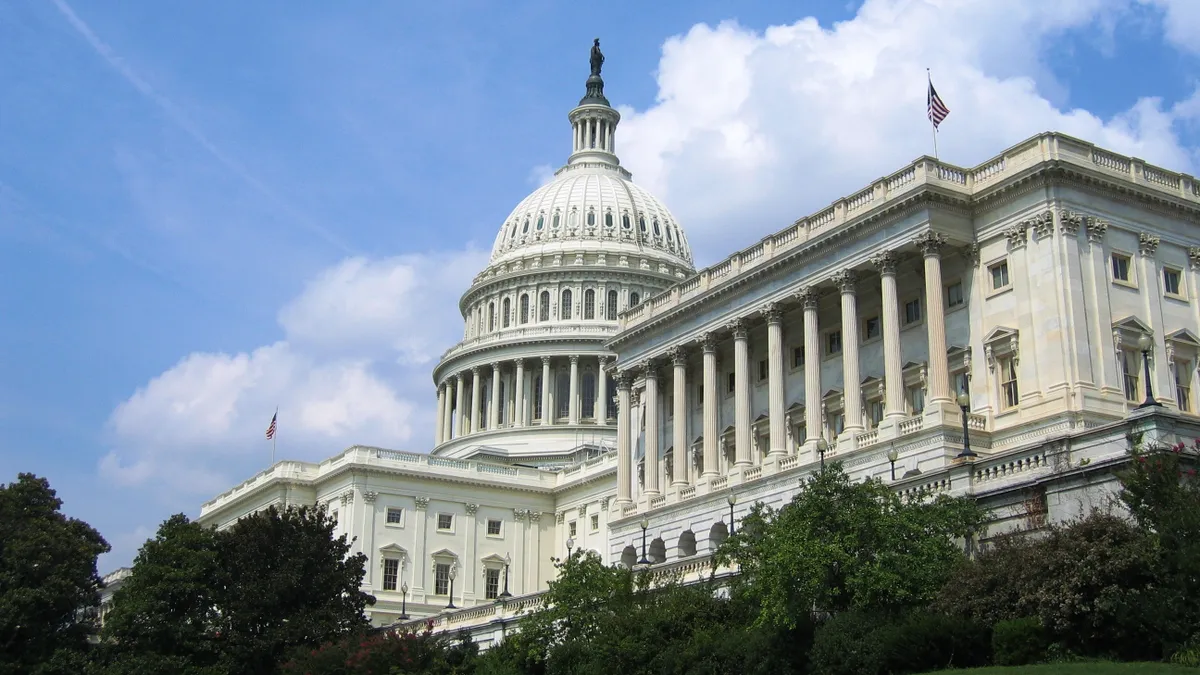Dive Brief:
-
The American Institute of Architects — along with nearly 600 signatory businesses — made a written appeal to U.S. congressional leaders asking them to resist the fossil fuel industry's attempts to repeal Section 433 of the Energy Independence and Security Act, according to the association. Among the signatories are prominent architecture firms Populous, HOK, Perkins+Will and Studio Gang.
-
Section 433 phases out fossil fuel use in federal buildings — new and those with a renovation project of at least $2.5 million — with complete elimination by 2030.
- The AIA told lawmakers that President Barack Obama is on the record as opposing a repeal of Section 433 and that the regulation could "save the taxpayer millions of dollars over the course of a building's life cycle," as operating costs are lower for high-efficiency buildings.
Dive Insight:
In a recent review of its progress toward meeting the energy-intensity-reduction goals the AIA laid out in its 2030 Commitment, the organization found that the industry as a whole has fallen short. Only 4% of projects have met the energy-savings target of 70% set for 2015 building performance, and average savings were only 38%, despite each signatory to the initiative committing to carbon neutrality by 2030. In addition, only 60% of firms reported using energy modeling early in the design phase, a process the AIA said is a vital component of meeting 2030 goals.
Regardless of the AIA's concerns around long-term energy goals, a mandate that all federal buildings reduce their energy usage by 2.5% annually between 2015 and 2025 seems to be working, at least when compared to the private sector. Between 2003 and 2012, government buildings reduced their energy consumption per square foot by 23%, according to a U.S. Energy Information Administration Commercial Building Energy Consumption survey. The same study determined that privately owned commercial buildings reduced theirs by only 12% during that same time period.
Federal state and local governments own about 14% of U.S. commercial buildings, according to the EIA, and those facilities are almost three times as likely to have formal energy management plans and building automation systems. One area where private industry and government keep pace with each other, however, is that of energy system upgrades.













